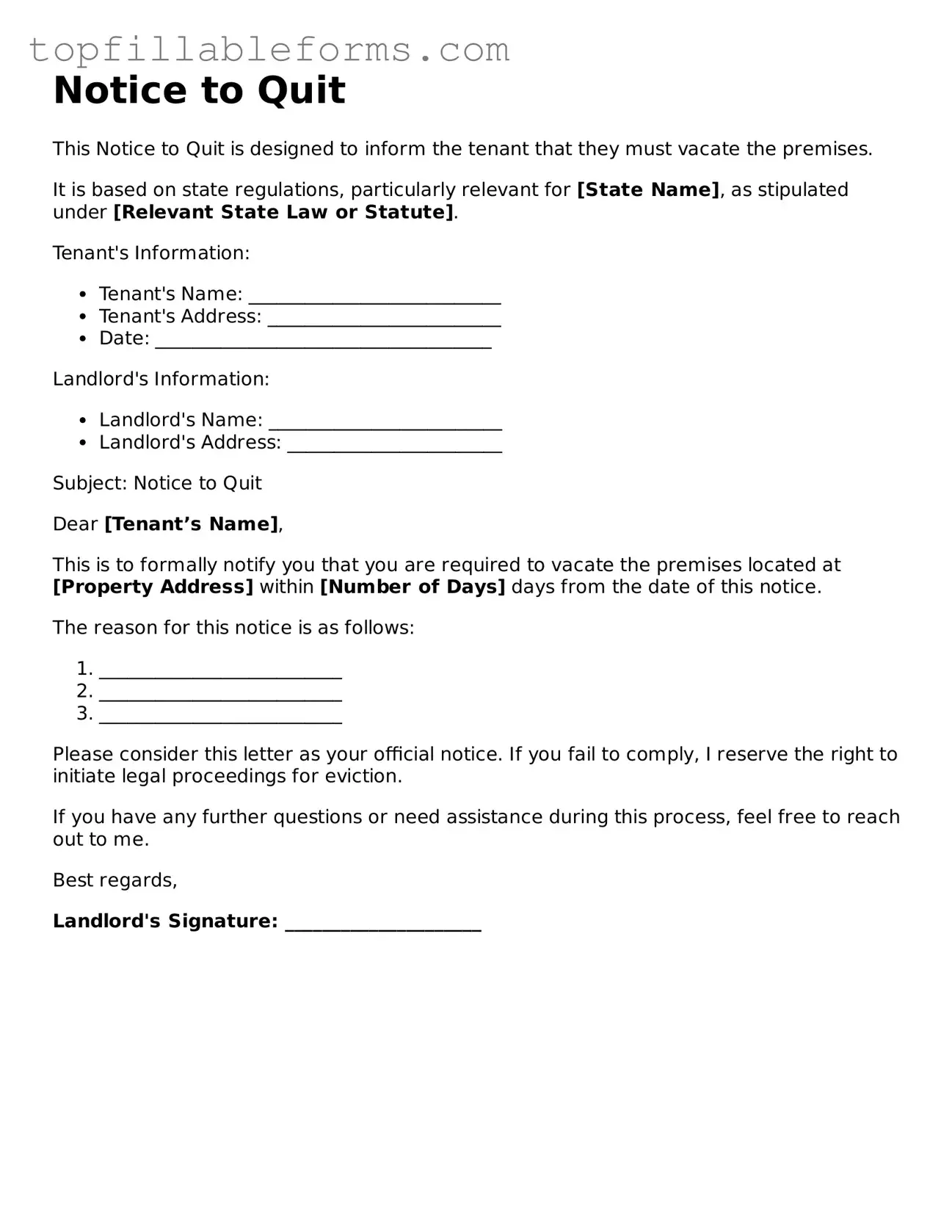Notice to Quit
This Notice to Quit is designed to inform the tenant that they must vacate the premises.
It is based on state regulations, particularly relevant for [State Name], as stipulated under [Relevant State Law or Statute].
Tenant's Information:
- Tenant's Name: ___________________________
- Tenant's Address: _________________________
- Date: ____________________________________
Landlord's Information:
- Landlord's Name: _________________________
- Landlord's Address: _______________________
Subject: Notice to Quit
Dear [Tenant’s Name],
This is to formally notify you that you are required to vacate the premises located at [Property Address] within [Number of Days] days from the date of this notice.
The reason for this notice is as follows:
- __________________________
- __________________________
- __________________________
Please consider this letter as your official notice. If you fail to comply, I reserve the right to initiate legal proceedings for eviction.
If you have any further questions or need assistance during this process, feel free to reach out to me.
Best regards,
Landlord's Signature: _____________________
